
 18:07
18:07
2023-12-06 07:26

 3:04
3:04

 3:04
3:04
2024-05-17 08:42

 8:00
8:00

 8:00
8:00
2024-06-23 16:20
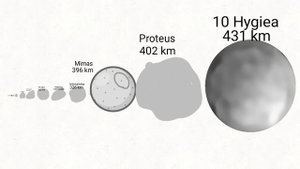
 3:46
3:46

 3:46
3:46
2024-04-20 04:17

 23:18
23:18

 23:18
23:18
2024-09-27 10:45
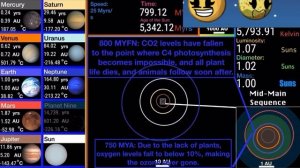
 12:50
12:50

 12:50
12:50
2023-11-28 03:18

 5:57
5:57

 5:57
5:57
2024-01-21 08:26

 3:28
3:28

 3:28
3:28
2024-05-04 12:10

 8:15
8:15

 8:15
8:15
2025-01-24 22:16
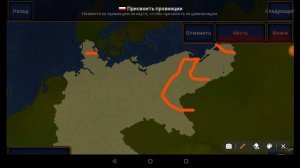
 3:09
3:09

 3:09
3:09
2024-04-23 03:27

 1:16
1:16

 1:16
1:16
2024-06-30 02:44

 6:50
6:50

 6:50
6:50
2023-10-28 21:55

 8:02
8:02

 8:02
8:02
2023-10-25 17:22
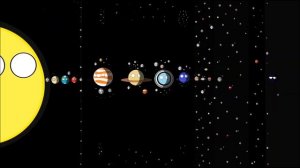
 7:00
7:00

 7:00
7:00
2023-10-29 04:19
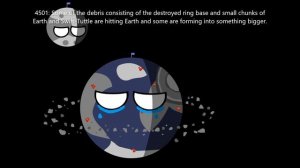
 6:23
6:23

 6:23
6:23
2023-10-24 07:23

 0:41
0:41

 0:41
0:41
2023-10-31 23:01

 3:10
3:10

 3:10
3:10
2022-08-07 13:06

 1:50
1:50
![Сергей Одинцов - Девочка любимая (Премьера клипа 2025)]() 3:56
3:56
![Жасурбек Мирзажонов - Суймаганга суйкалдим (Премьера клипа 2025)]() 5:45
5:45
![KhaliF - Где бы не был я (Премьера клипа 2025)]() 2:53
2:53
![Руслан Гасанов, Роман Ткаченко - Друзьям (Премьера клипа 2025)]() 3:20
3:20
![Зара - Танго о двух влюбленных кораблях (Премьера клипа 2025)]() 3:10
3:10
![Tural Everest - Ночной город (Премьера клипа 2025)]() 3:00
3:00
![Bruno Mars ft. Ed Sheeran – Home to You (Official Video 2025)]() 3:25
3:25
![Сергей Сухачёв - Розовый туман (Премьера клипа 2025)]() 3:13
3:13
![Алмас Багратиони - Сила веры (Премьера клипа 2025)]() 3:18
3:18
![Зара - Прерванный полет (Премьера клипа 2025)]() 5:08
5:08
![NIKA DUBIK, Winter Spirit - Искры (Премьера клипа 2025)]() 4:27
4:27
![Шерзодбек Жонибеков - Дадажон (Премьера клипа 2025)]() 3:02
3:02
![Alex Lim, Игорь Крутой - Вокзал (Премьера клипа 2025)]() 3:32
3:32
![Хабибулло Хамроз - Хуп деб куёринг (Премьера клипа 2025)]() 4:04
4:04
![Слава - В сердце бьёт молния (Премьера клипа 2025)]() 3:30
3:30
![BITTUEV - Не плачь (Премьера клипа 2025)]() 2:18
2:18
![Инна Вальтер - Роза (Премьера клипа 2025)]() 3:18
3:18
![Gulinur - Nishatar (Official Video 2025)]() 3:40
3:40
![Мухит Бобоев - Маликам (Премьера клипа 2025)]() 3:18
3:18
![Selena Gomez - In The Dark (Official Video 2025)]() 3:04
3:04
![Чумовая пятница 2 | Freakier Friday (2025)]() 1:50:38
1:50:38
![Богомол | Samagwi (2025)]() 1:53:29
1:53:29
![Большое смелое красивое путешествие | A Big Bold Beautiful Journey (2025)]() 1:49:20
1:49:20
![Государственный гимн | Americana (2025)]() 1:47:31
1:47:31
![Диспетчер | Relay (2025)]() 1:51:56
1:51:56
![Девушка из каюты №10 | The Woman in Cabin 10 (2025)]() 1:35:11
1:35:11
![Плохой Cанта 2 | Bad Santa 2 (2016) (Гоблин)]() 1:28:32
1:28:32
![F1 (2025)]() 2:35:53
2:35:53
![Заклятие 4: Последний обряд | The Conjuring: Last Rites (2025)]() 2:15:54
2:15:54
![Плохие парни 2 | The Bad Guys 2 (2025)]() 1:43:51
1:43:51
![Дикари | The Savages (2007)]() 1:54:19
1:54:19
![Сколько стоит жизнь? | What Is Life Worth (2020)]() 1:58:51
1:58:51
![Эффект бабочки | The Butterfly Effect (2003)]() 1:53:35
1:53:35
![Порочный круг | Vicious (2025)]() 1:42:30
1:42:30
![Хищник | Predator (1987) (Гоблин)]() 1:46:40
1:46:40
![Элис, дорогая | Alice, Darling (2022)]() 1:29:30
1:29:30
![Голый пистолет | The Naked Gun (2025)]() 1:26:24
1:26:24
![Фантастическая четвёрка: Первые шаги | The Fantastic Four: First Steps (2025)]() 1:54:40
1:54:40
![Непрощённая | The Unforgivable (2021)]() 1:54:10
1:54:10
![Сумерки | Twilight (2008)]() 2:01:55
2:01:55
![Котёнок Шмяк]() 11:04
11:04
![Шахерезада. Нерассказанные истории Сезон 1]() 23:53
23:53
![Приключения Пети и Волка]() 11:00
11:00
![МиниФорс]() 0:00
0:00
![Корги по имени Моко. Домашние животные]() 1:13
1:13
![МиниФорс Сезон 1]() 13:12
13:12
![Артур и дети круглого стола]() 11:22
11:22
![Полли Покет Сезон 1]() 21:30
21:30
![Новогодние мультики – Союзмультфильм]() 7:04
7:04
![Простоквашино]() 6:48
6:48
![Сборники «Зебра в клеточку»]() 45:30
45:30
![Псэмми. Пять детей и волшебство Сезон 1]() 12:17
12:17
![Папа Супергерой Сезон 1]() 4:28
4:28
![Чуч-Мяуч]() 7:04
7:04
![Сборники «Умка»]() 1:20:52
1:20:52
![Сборники «Ну, погоди!»]() 1:10:01
1:10:01
![Школьный автобус Гордон]() 12:34
12:34
![Пип и Альба. Приключения в Соленой Бухте! Сезон 1]() 11:02
11:02
![Карли – искательница приключений. Древнее королевство]() 13:00
13:00
![Агент 203]() 21:08
21:08

 1:50
1:50Скачать видео
| 256x144 | ||
| 640x360 | ||
| 854x480 |
 3:56
3:56
2025-10-28 11:02
 5:45
5:45
2025-10-27 13:06
 2:53
2:53
2025-10-28 12:16
 3:20
3:20
2025-10-25 12:59
 3:10
3:10
2025-10-27 10:52
 3:00
3:00
2025-10-28 11:50
 3:25
3:25
2025-11-02 10:34
 3:13
3:13
2025-10-24 12:18
 3:18
3:18
2025-10-24 12:09
 5:08
5:08
2025-10-31 12:50
 4:27
4:27
2025-10-31 16:00
 3:02
3:02
2025-10-25 13:03
 3:32
3:32
2025-10-31 15:50
 4:04
4:04
2025-10-28 13:40
 3:30
3:30
2025-11-02 09:52
 2:18
2:18
2025-10-31 15:53
 3:18
3:18
2025-10-28 10:36
 3:40
3:40
2025-10-31 13:38
 3:18
3:18
2025-11-02 10:30
 3:04
3:04
2025-10-24 11:30
0/0
 1:50:38
1:50:38
2025-10-16 16:08
 1:53:29
1:53:29
2025-10-01 12:06
 1:49:20
1:49:20
2025-10-21 22:50
 1:47:31
1:47:31
2025-09-17 22:22
 1:51:56
1:51:56
2025-09-24 11:35
 1:35:11
1:35:11
2025-10-13 12:06
 1:28:32
1:28:32
2025-10-07 09:27
 2:35:53
2:35:53
2025-08-26 11:45
 2:15:54
2:15:54
2025-10-13 19:02
 1:43:51
1:43:51
2025-08-26 16:18
 1:54:19
1:54:19
2025-08-27 18:01
 1:58:51
1:58:51
2025-08-27 17:17
 1:53:35
1:53:35
2025-09-11 08:20
 1:42:30
1:42:30
2025-10-14 20:27
 1:46:40
1:46:40
2025-10-07 09:27
 1:29:30
1:29:30
2025-09-11 08:20
 1:26:24
1:26:24
2025-09-03 13:20
 1:54:40
1:54:40
2025-09-24 11:35
 1:54:10
1:54:10
2025-08-27 17:17
 2:01:55
2:01:55
2025-08-28 15:32
0/0
 11:04
11:04
2023-05-18 16:41
2021-09-22 23:25
 11:00
11:00
2022-04-01 17:59
 0:00
0:00
2025-11-04 00:45
 1:13
1:13
2024-11-29 14:40
2021-09-23 00:15
 11:22
11:22
2023-05-11 14:51
2021-09-22 23:09
 7:04
7:04
2023-07-25 00:09
 6:48
6:48
2025-10-17 10:00
 45:30
45:30
2025-09-17 18:49
2021-09-22 22:23
2021-09-22 21:52
 7:04
7:04
2022-03-29 15:20
 1:20:52
1:20:52
2025-09-19 17:54
 1:10:01
1:10:01
2025-07-25 20:16
 12:34
12:34
2024-12-02 14:42
2021-09-22 23:36
 13:00
13:00
2024-11-28 16:19
 21:08
21:08
2025-01-09 16:39
0/0

